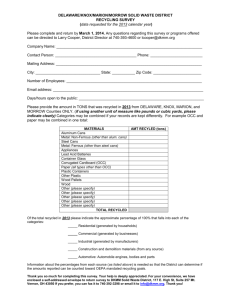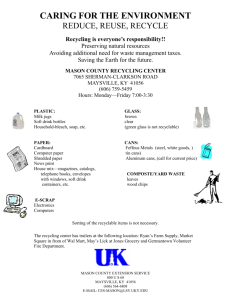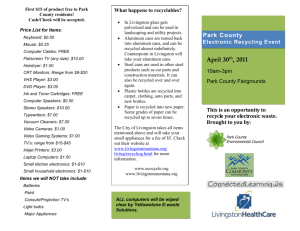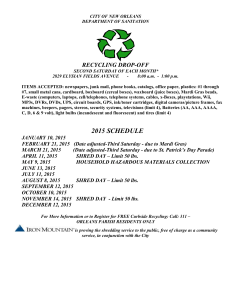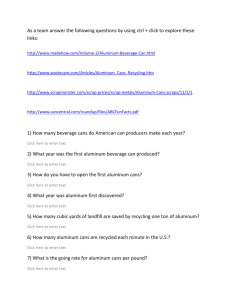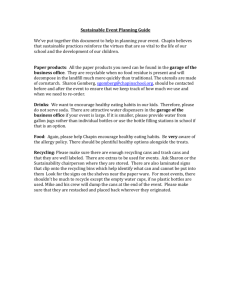Energy and Recycling Math Problems
advertisement
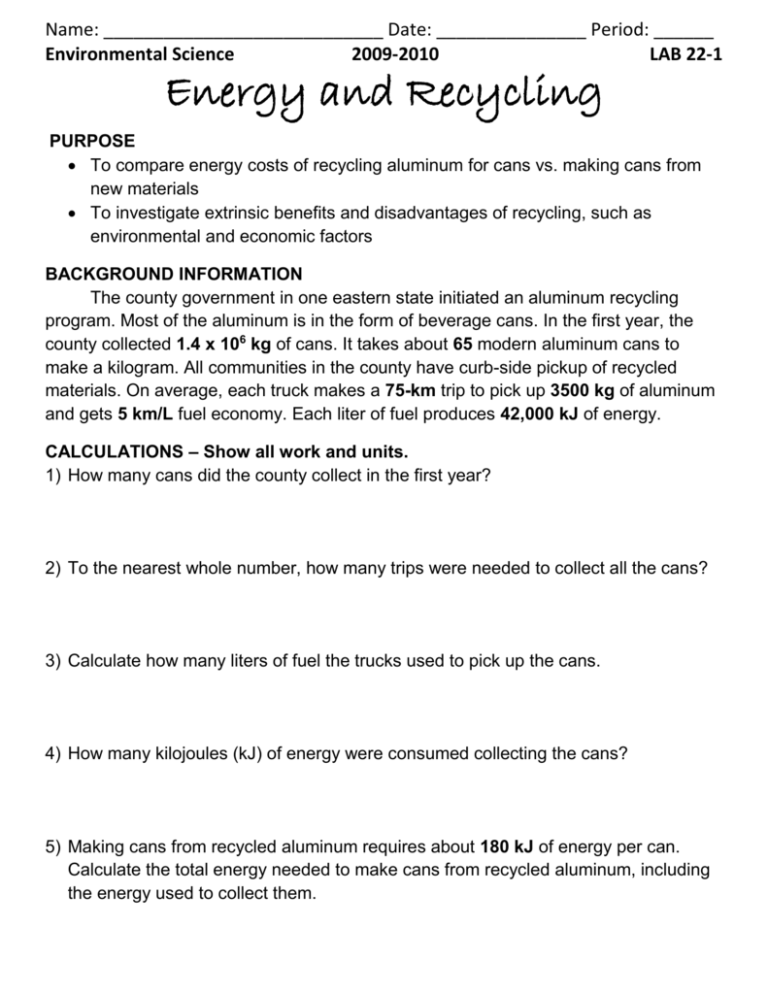
Name: ____________________________ Date: _______________ Period: ______ Environmental Science 2009-2010 LAB 22-1 Energy and Recycling PURPOSE To compare energy costs of recycling aluminum for cans vs. making cans from new materials To investigate extrinsic benefits and disadvantages of recycling, such as environmental and economic factors BACKGROUND INFORMATION The county government in one eastern state initiated an aluminum recycling program. Most of the aluminum is in the form of beverage cans. In the first year, the county collected 1.4 x 106 kg of cans. It takes about 65 modern aluminum cans to make a kilogram. All communities in the county have curb-side pickup of recycled materials. On average, each truck makes a 75-km trip to pick up 3500 kg of aluminum and gets 5 km/L fuel economy. Each liter of fuel produces 42,000 kJ of energy. CALCULATIONS – Show all work and units. 1) How many cans did the county collect in the first year? 2) To the nearest whole number, how many trips were needed to collect all the cans? 3) Calculate how many liters of fuel the trucks used to pick up the cans. 4) How many kilojoules (kJ) of energy were consumed collecting the cans? 5) Making cans from recycled aluminum requires about 180 kJ of energy per can. Calculate the total energy needed to make cans from recycled aluminum, including the energy used to collect them. Name: ____________________________ Date: _______________ Period: ______ Environmental Science 2009-2010 LAB 22-1 6) It takes 1520 kJ of energy to make one aluminum can from bauxite ore. Assuming no other energy is used; calculate how much energy is needed to make the cans from bauxite ore. 7) a) Calculate the energy difference between the two methods mentioned in questions 5 and 6. 8) b) How many liters of fuel are saved by recycling the cans? PROBLEMS Apparently, there is a considerable energy savings in using recycled aluminum to make new cans. The decision to recycle is surely not that simple. There are many other factors to take into account. 9) Describe two environmental and two economic problems associated with the recycling of aluminum. There are many materials that lend themselves to recycling. Some of these do not have the clear-cut, easily seen advantage of aluminum recycling. For example, to make glass from raw materials requires a little over 18,100 kJ/kg of glass manufactured. To make glass from recycled materials takes about 16,700 kJ/kg of glass product. If the costs of collecting the recycled glass are factored in, the energy savings are more than offset. 10) Cite two environmental and two economic reasons to manufacture glass from recycled materials, even if the costs are higher than using raw materials. Name: ____________________________ Date: _______________ Period: ______ Environmental Science 2009-2010 LAB 22-1 “Paper or plastic?” Many grocery customers select paper, correctly thinking it is made of natural, renewable, environmentally friendly materials. Polyethylene plastic bags are made from nonrenewable crude oil. The choice is not as clear-cut as it seems. 11) a) Compare the manufacture, use, and reuse potential of paper vs. plastic grocery bags. Investigate the manufacture of each for air pollution, solid waste, cost, water pollution, energy use, and land use. Also consider landfill volume, reuse, ease of recycling, and biodegradability. b) Explain two alternatives to using new paper or plastic bags at the store.


